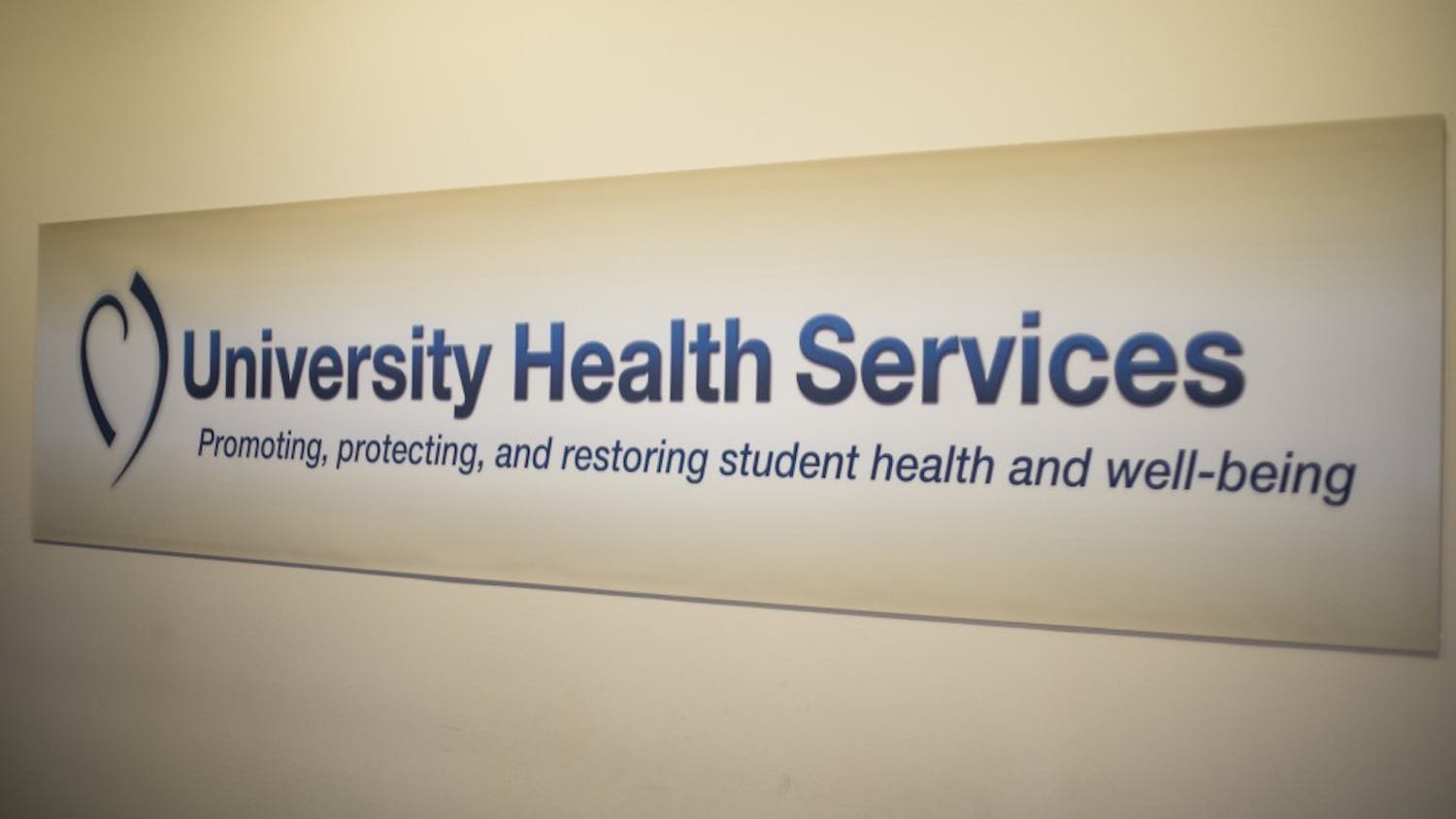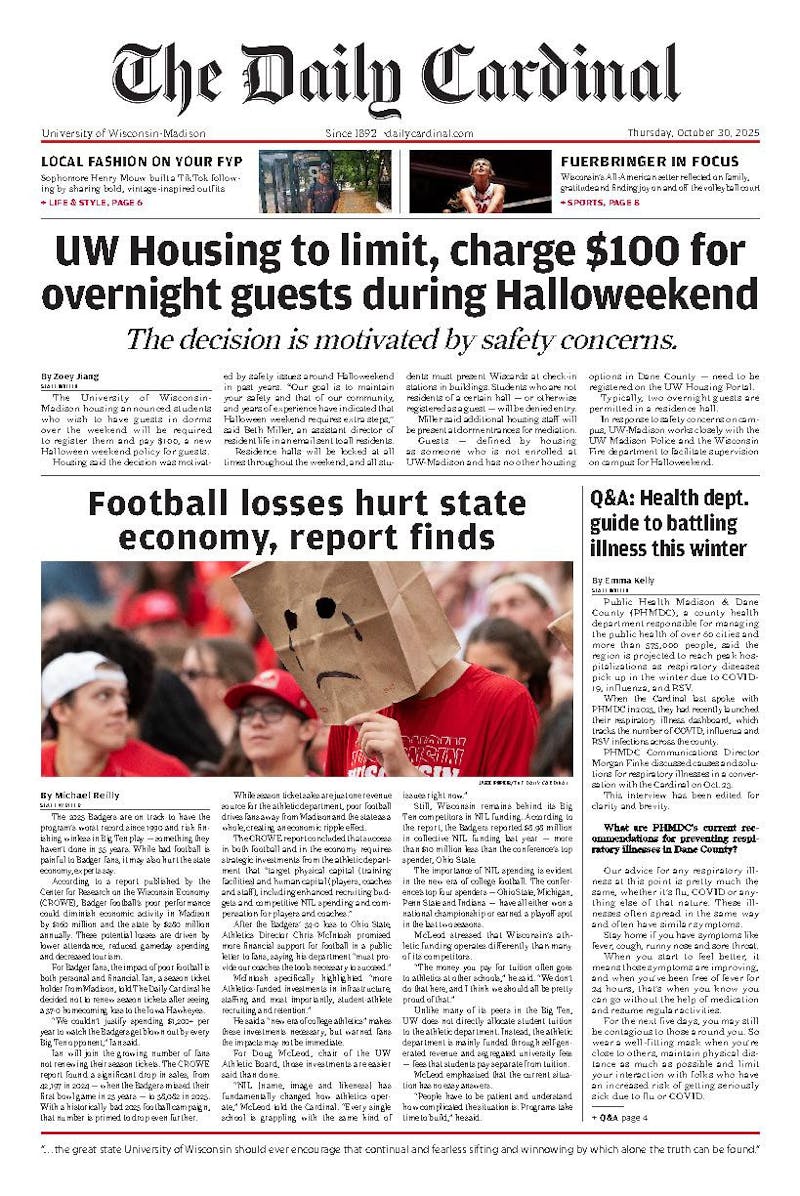“It’s impossible to ignore the fact that in addition to today’s officer-involved shooting at Oshkosh West, the Sparta School District is closed due to security threats, and that this happened just a day after we had another school shooting at Waukesha South,” Gov. Tony Evers said in a press statement after two days of back-to-back school shootings shook communities across the state.
The public is looking for answers, students are looking for security and institutions are looking for solutions to address the growing public health crisis: school violence.
Some call for gun control, while others seek increased mental health awareness, yet we continue to be left with a lack of control when students across the country unleash their pain onto schools.
Many blame the media for introducing students to aggressive and abusive behaviors. Many blame the media for creating infamous school shooters. Many blame the media for encouraging copycats — someone who imitates another crime.
While some desensitization does occur when people are exposed to violent media, this cannot be the only reason students are using weapons in schools since this content is not isolated to America, which experiences extraordinarily high levels of gun violence compared to other nations.
“I do not think we should become too overly focused on media as the key player," UW-Madison educational psychology doctoral candidate Mary Cate Komoski said. "If it were the thing, [school shootings] would be more of a world-wide issue.”
Rather than looking to media influence when trying to make sense of a school shooter’s impulsive actions, Komoksi and UW-Madison child development expert and professor Jason Horowitz both emphasized the idea that ‘hurt people, hurt people.’
“There are many risk factors for someone becoming violent,” Horowitz said. “The most obvious one is trauma history. When people are victims of violence they are more likely to be violent in the future.”
While schools cannot control abuse that happens outside of their spaces, they can provide emotional behavioral support or school-wide initiatives to reduce bullying. However, Horowitz said these “universal interventions” are only part of the answer.
The other part is providing responsive mental health services to those who are struggling, with the goal of early mediation. But, many schools quickly run into resource problems, making them unable to meet the American School Counselor Association recommendation of one counselor for every 250 students.
“In schools we do see really under-ratioed school counseling staff and we do need to pay attention to students who are disaffect, ostracized, bullied or victims of crime, but that is not the opposite of gun control,” Horowtiz said.
Horowitz is alluding to what he calls a false dichotomy created by polarized politics, in which the left argues for restrictive gun access and the right calls school violence a mental health issue.
We must eliminate these separate ideologies in order to create change, he emphasized.
“This is not an either/or question,” Horowtiz said. “This is a yes, and question.”
Challenges to identifying individual students needs
Even in a perfectly balanced school, Komoski said it is exceedingly difficult to know which students require the most attention –– especially by the time they reach adolescence.
“We do see some risk factors, we do see some commonalities among school shooters, but not as many commonalities as we would like in order to create a clear picture of who to look for,” Komoski explained.
This is because many students have experienced trauma, but not all trauma presents itself in the same way — and not all victims are destined to become perpetrators.
Despite the odds, there is still a great need for in-school support. Not only to try to identify those at risk of developing aggressive tendencies –– especially when trying to stop potential copycats –– but also to address the needs of students who were present during a school shooting.
Exposure to violence can result in trauma. The emotional response of fear can easily be conditioned to repeat itself when instigated by a triggering situation or environment.
Komoski said the way humans are programmed to develop fears surrounding death at a young age is something that keeps us alive as a species. However, this life-saving response can create lasting implications for students’ feelings surrounding school safety.
“We could be exposed to something incredibly scary as little as one time and develop an intense fear that sticks around for much longer,” Komoski said. “Having undergone a single trauma experience –– being in the school building –– can turn into great anxiety about being in the school building again at all.”
While not all students will develop this changed relationship to their school environment, Komoski finds evidence suggesting some students may be more susceptible to exhibiting this anxiety.
This is because the incident may exacerbate already-established reasons children distance themselves from school, like feeling unwelcome or incapable of success.
“How do they link this experience to the desire to stay in school and feel safe in school?” Komoski asked. “For instance, someone who wasn't thrilled about school in the first place — this is going to be one more reason for them not to go.”
Public school administration response to recent violence
Wisconsin’s Department of Public Instruction offers a free program for all faculty called the “Trauma-Sensitive Schools Initiative,” which aims to support students on a day-to-day basis through online faculty training modules.
This initiative hopes to develop faculty’s understanding of students’ needs to create protective factors, however it is unclear if districts are utilizing this resource.
“We don’t keep specific data to my knowledge on how many schools participate or use those resources,” Education Consultant for DPI School Safety Brian Dean said. “They are available to all school districts for free.”
When discussing mitigation plans for the recent back-to-back shootings at Waukesha South and Oshkosh West High Schools, DPI representatives continued to refer back to previously implemented practices, existing long before Monday’s incident.
Timothy Peerenboom, education consultant for DPI School Psychology and Mental Health Programs, said it is “hard to give specific advice not being directly involved” with students who evacuated or were impacted by the shootings.
“Again, I would just point to all the resources we have and as [Dean] mentioned, the National Association of School Psychology, their PREPaRE training, has lots of resources and tips on how parents and teachers can talk to kids through these things because they certainly will have questions and certainly strong feelings,” Peerenboom said.
Other external policies that support the DPI’s efforts were created by the Wisconsin Legislature and Department of Justice's Office of School Safety.
Dean pointed to Wisconsin ACT 143, a bill passed in 2017 after the Parkland High School shooting, which allocated $100,000 million to DPI for safety initiatives, mostly used to increase faculty training.
Multi-leveled systems perpetuating school violence
Although many people look to schools in the aftermath of a shooting, school violence is not a school-created problem.
“Whenever we ask what can schools do to address this problem, I am always thinking to myself, the problems are seven steps downstream from their cause,” Horowitz said.
He drew parallels between society’s call to action of schools to solve violence, and the racial achievement gap. Horowitz believes we ask schools to repair the effect, rather than addressing historically ingrained systems that caused the problem initially, like housing discrimination or in the case of school shootings, a student’s past traumas.
“We've baked this disparity into this system, and then we are saying, 'Hey schools, what are you going to do to fix this?’” Horowitz exclaimed. “That is the excuse to not look at all the other parts of society that cause this issue.”
Komoski futhers this view, claiming there are “a million variables” to address and something on every level we could amend to support this issue, preventing us from finding a sufficient solution.
“For instance, if health insurance covered more counseling, then perhaps if schools identified students at risk, they would be able to support the family in helping them find a counselor outside the school system,” Komoski said. “But then we start looking at health insurance, which becomes a whole other monster.”
The multi-faceted nature of this critically sensitive issue could be why no answers developed or implemented so far are good enough to stop the prevalence of this compounding violence.
When asked if there are additional steps we should be taking, or signs to look out for to prevent future shootings, Komoski answered with: “It just sucks that the answer is no.”






